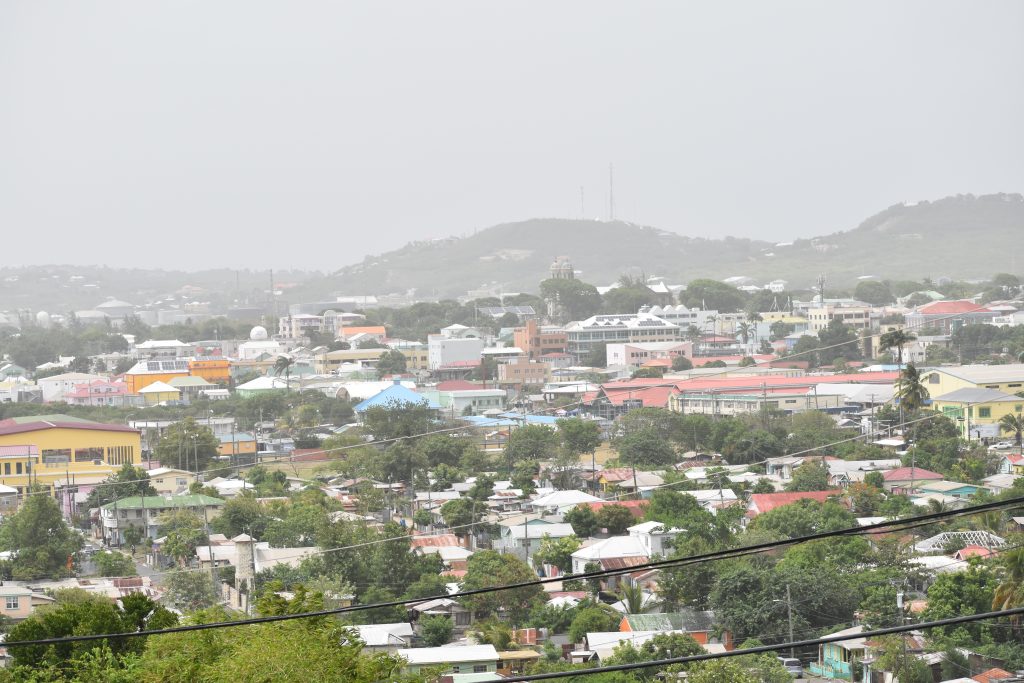
By Latrishka Thomas
‘Record-breaking’ levels of Sahara dust caused air quality to hit dangerously “unhealthy” levels on Sunday with residents reporting itching eyes, sneezing and even difficulty breathing.
Elderly people and children are said to be among those most sensitive to the dust, described by one weather expert as the “worst” he has ever seen.

A major plume from the Sahara Desert is to blame for the hazy skies and deleterious conditions which Antigua Met Office director Dale Destin said could affect not just vulnerable people with heart disease or asthma, but also those known to be fairly healthy.

He said the conditions were so severe that they could cause “increased aggravation of heart or lung disease, possibly premature death … in persons with cardiopulmonary disease, and the elderly”.
Destin said visibility had also decreased exponentially.

“We saw visibility being reduced to around three miles or about six kilometres. This is probably going to be the record lowest visibility we are seeing as a result of the dust,” he stated.
The meteorologist said very fine particles in the plume are what cause the biggest risk because at “2.5 micrometers, the very tiny particles that can and will be inhaled can reach very deep parts of the lungs and possibly reach the bloodstream”.

To mitigate against becoming ill, Destin recommended that residents stay indoors if possible, keep doors and windows closed, and continue wearing facemasks. He advised persons to consult their physicians for further advice.
“It should drop to moderate levels which is to say, at that level, only or mostly persons who are particularly sensitive will continue to be affected,” he explained.

Furthermore, by Tuesday or Wednesday, the conditions could be back to normal “but we are also monitoring further dust plumes that may be traversing the Atlantic from the Saharan Desert,” he said.
Meanwhile, the meteorologist shared some positive news saying that “it is well known that the dust has a negative impact on tropical cyclones. It’s, for one, dry air which makes it difficult for cloud formation, hence tropical cyclone formation.
“Also, because of the many tiny particles, it has the effect of breaking down clouds and making it hard for cloud droplets to become raindrops,” he explained.
However, “June is generally a slow month with respect to the hurricane season; there are no cyclones out there at the moment to be suppressed or inhibited. So there is no issue at the moment of us being spared by the dust suppressing any cyclone activity,” Destin said.
He explained that “if the dust was to persist …then we could see the activity which we have forecast for the season – which we are saying is to be high – that is likely to be moderated” but he noted that the dust cannot be forecasted beyond days.
The Saharan dust is a mixture of sand and dust from the vast desert area that covers much of North Africa known as the Sahara. The dust travels because wind can blow very strongly over deserts – whipping up dust and sand high into the sky.
